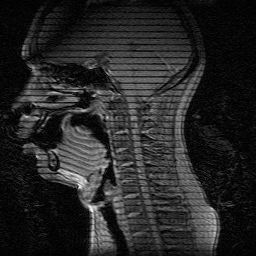Vocal tract
Human speech is a combination of sounds and silences generated by the speech mechanism of the vocal tract into meaningful patterns.
Click here to see a diagram of the vocal tract
All speech begins as a silent breath of air, created by muscular activity in the chest. The air then comes up from the lungs, via the vocal tract and exiting as a sound wave.
Basically, the speech mechanism as four components: muscular activity, air, some type of resistance or obstruction to the air which causes some sort of sound to be made, and amplification to make the sound loud enough to be heard.
Changes to the air flow between the lungs and mouth and nose produce different sounds.
Air starts off in the lungs, flows up through the trachea ( or windpipe), through the larynx, past the epiglottis and through the pharynx. From there, the air can go either through the mouth or nose.
The Vocal tract is the channel of air flow between the larynx and the mouth and nose.
